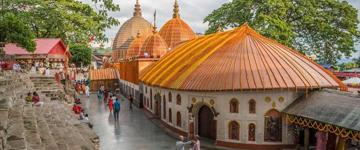Konso tribe & village
The Konso live in an isolated region of the basalt hills of Lower Omo Valley in Sourthern Nations province of Ethiopia. The area is made up of hard rocky slopes. A Konso village maybe fortified by a stone wall used as a defensive measure. Their village is located on hilltops and is split up into communities, with each community having a main hut. In order to enter a Konso village, you must pass through a gate and a series of alleys. These paths are part of it's security system, keeping the village difficult to access.
Konso Cultural Lanscape has been registered as UNESCO World Heritage Site in 2011.
They are mixed agriculturists using their dry and infertile lands to grow crops. Animal dung is used to fertilize the grounds and their most important crop is the sorghum. Sorghum is used as a flour and to make local beer. Grains, beans, cotton, corn and coffee are also grown by the Konso people.
The erection of stones and poles is part of the Konso tradition. A generation pole is raised every 18 years, marking the start of a new generation. The age of a village can be determined by how many poles are standing. Carved wooden statues are also used to mark the grave of a famous Konso tribal member. The marker, called a Waga is placed above the grave and smaller statues are then placed around the larger one representing his wives and conquered enemies.
Although the Konso people have many customs dating back hundreds of years, it is not uncommon for them to be seen wearing western clothing. As newer generations grow, their traditional attire has gradually changed to modern societies. The Konso is a very interesting tribe to visit on your trip to the Lower Omo Valley.
Konso Cultural Landscape
Konso Cultural Landscape is a 55km2 arid property of stone walled terraces and fortified settlements in the Konso highlands of Ethiopia. It constitutes a spectacular example of a living cultural tradition stretching back 21 generations (more than 400 years) adapted to its dry hostile environment. The landscape demonstrates the shared values, social cohesion and engineering knowledge of its communities. The site also features anthropomorphic wooden statues - grouped to represent respected members of their communities and particularly heroic events - which are an exceptional living testimony to funerary traditions that are on the verge of disappearing. Stone steles in the towns express a complex system of marking the passing of generations of leaders.
Brief Synthesis
The Konso Cultural Landscape is characterized by extensive dry stone terraces bearing witness to the persistent human struggle to use and harness the hard, dry and rocky environment. The terraces retain the soil from erosion,collect a maximum of water, discharge the excess, and create terraced fields that are used for agriculture. The terraces are the main features of the Konso landscape and the hills are contoured with the dry stone walls, which at places reach up to 5 meters in height.
The walled towns and settlements (paletas) of the Konso Cultural Landscape are located on high plains or hill summits selected for their strategic and defensive advantage. These towns are circled by between one and six rounds of dry stone defensive walls, built of locally available rock. The cultural spaces inside the walled towns, called moras, retain an important and central role in the life of the Konso. Some walled towns have as many as 17 moras. The tradition of erecting generation marking stones called daga-hela, quarried, transported and erected through a ritual process, makes the Konso one of the last megalithic people.
The traditional forests are used as burial places for ritual leaders and for medicinal purposes. Wooden anthropomorphic statues (waka), carved out of a hard wood and mimicking the deceased, are erected as grave markers. Water reservoirs (harda) located in or near these forests, are communally built and are, like the terraces, maintained by very specific communal social and cultural practices.
Integrity
The boundaries of the Konso Cultural Landscape coincide with natural features, like rivers or edges of densely terraced landscape, and are demarcated by the cultural and socio-economic history of the Konso people. All components relevant to the understanding of the traditional system have been included, such as the key tangible attributes of terraces, walled settlements, sacred forests, shrines and burial sites. The clear distinctive character of the landscape is vulnerable to dispersal of the fortified settlements, in case houses are built outside the town walls.
Authenticity
The Konso Cultural Landscape still largely retains its original form and design. The materials used for the construction of the terraces and the town walls are original and their conservation continues following traditional practices, executed by the community members. The terraces continue in their original arrangements, use and function. The walled towns are still inhabited by the communities and remain organized following the traditional system. The traditionally protected forests are still protected and used for ritual and burial and the water reservoirs remain in use and are periodically conserved. Associated traditions, which continue shaping the landscape, such as the ritual erection of generation and man-hood stones and generation trees continues to be actively practiced. The same applies for the use of the moras and the erection of wakas on the graves. The communities nurture the traditional code of respect to the culture and adherence to the age group (hela) and the ward (kanta), which is responsible for the protection and conservation of the attributes and continues the traditional guardianship.


